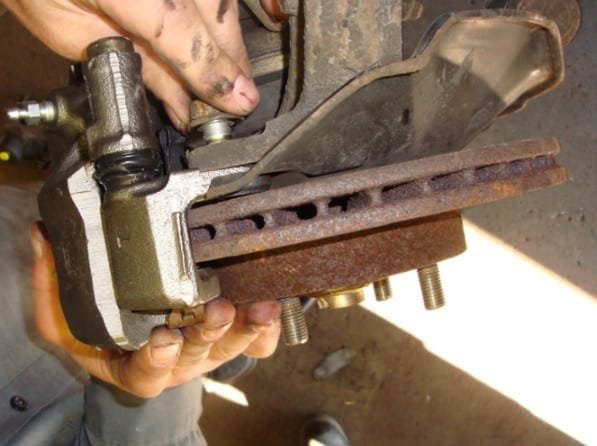My question is about how brake calipers and Brake pads work in general. It is not about any specific Car. I do understand what happens when the brake pedal is pressed. How the piston in the Caliper applies pressure onto the brake pads. But, what I do not understand what happens when we take our foot off the brake pedal. Brake Pads are not fastened to the Cylinder in the Caliper. If the Cylinder in the Caliper moves back when we take our foot of the brake pedal, brake pads do not have to move back, because, they are not fastened to the cylinder. So, my question is why should the brake pads not continue to keep rubbing against the rotor. What moves the Brake Pads away from the rotor when we take our foot of the Brake pedal? Thanks
I am not certain myself. It seems there is quite the debate about it in the internet forums and such. After reading the information it seems there are three things that contribute to the retraction of the brake caliper pistons.
- Brake Fluid
- Brake Caliper Piston Seal
- Runout of the Brake Rotor
Brake Fluid
According to Carl Griffiths who spent 5 years testing brake fluids and sat on the SABS council for the compulsory standard in South Africa.
We tend the think that brake fluid in incompressible, and for normal testing that is true, but under the pressure in the brake system, this is far from the truth. You can prove it for your self, by pressing hard on the pedal, there will be an appreciable movement. When your brakes are applied, that pressure forces the pads into harder and harder contact with the disc. Release the pressure and the pad moves back to where it was. In extreme cases, when the fluid also gets hot from friction, the cooling fluid contracts significantly given rise to “Soft bake pedal”. This is rare in normal motoring, but can happen especially if the brakes are held on for a long time down a steep hill, then released for a while. Even more dangerous, is when the brake fluid boils, then you have no brakes at all! That is why your fluid should be changed every couple of years. & why the DOT has set minimum standard for brake fluid.
Brake Caliper Piston Seal
According to George Alvarez,
When the brake pedal is released, the seal springs back into its natural shape and pulls the piston back with it. Again, like the rubber band, it’s not some kind of suction or reverse pressure that pulls back the rubber band. It is the removal of stretching pressure that allows the band to stop stretching, and get back to its natural shape. Notice what happens to the black seal in the image below.
This is why those nasty rusty calipers still work. Because the caliper is merely a housing. It doesn’t move.
Runout of the Brake Rotor
According to Robert Muir, B.A. Political Science & History (1970):
Two distinct forces serve to move a brake caliper piston back in its bore after a brake application. One, the O-rings that seal the piston bore clearance and are located in the caliper bore deflect outwards as the piston moves and the elasticity of the O-ring material pulls the piston back into the caliper bore when hydraulic pressure is no longer present. Two, the slight amount of runout on the brake disc will knock the caliper piston back away from the disc and into the caliper bore a little. No brake disc is ever perfectly flat, especially after some use.
and Caddyman :
If the sealing rubber did anything, the brakes would fully release with the wheel jacked up and the brake applied and released…But that is not the case, the brake will have considerable drag until you whack the wheel/tire with a heavy rubber hammer which will jar the rotor enough to push the piston back a few thousandths and release the brake completely…

My question is not about what moves the Piston back.I already uderstand how the piston moves back. My question is why should the brake Pads have to move back. Brake pads are not fastened to the piston. They don’t have to move back when the piston moves back ?
The brake pads have to move back in order to release the brake rotor and allow the rotor to move. Otherwise the brake would be applied constantly. The brake pad holds the rotor in place once stopped. If the pads were unable to move there would be an added amount of friction(that causes heat and rotors to warp) and more energy required to move the vehicle due to a constant drag on the rotor itself.
Comments are closed.